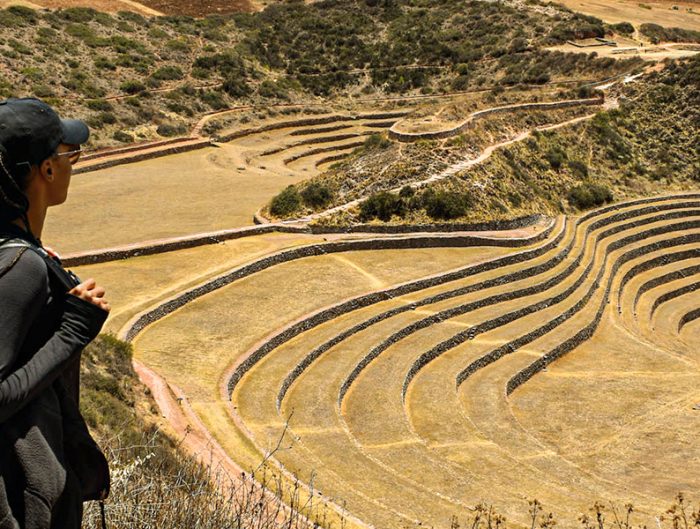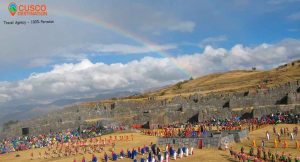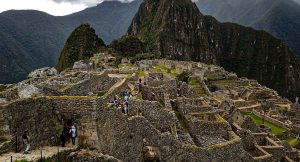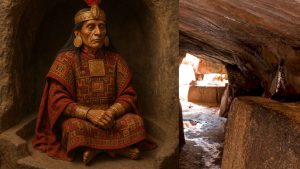Choquequirao is a unique and little-known destination. The only way to get there is by a walking route. This route also connects in eight days with Machu Picchu. Choquequirao is a sacred place, little known by visitors.

Summary
A CHALLENGING ROUTE:
Choquequirao Trek is somewhat difficult due to the geography that surrounds it, part of the mountains and jungle, difficult to navigate along winding roads. Located in the edge of the jungle of Cusco, it is a connection point between the jungle and the mountains. It is also one of the routes to get to Machu and Picchu.
Choquequirao is one of the most important archaeological monuments in Cusco and Peru. Not only because of the history, but because of its location and the important vestiges it left behind.
This place was built from scratch, the builders of the empire or the Inca, decided to build this enclosure, without having invaded another town. It shows that spectacular management of the topography of the place and the use of nature itself to modify it as a citadel.
The important thing about venturing on this adventure is that you will walk the paths laid out by the Incas, we are referring to the Qhapaq Ñan. This route is very well signposted. For those who are ready to cross the mountains and reach the jungle, this hike is yours.

CHOQUEQUIRAO, A NEW CAPITAL OF TAWANTINSUYO
Some studies indicate that Choquequirao must have been like a precinct destined to be a new city. From the remains found, a distribution of sectors can be observed. The same organization, seen in Cusco and Machu Picchu, and other main centers of the Incas. Choquequirao is located at an approximate height of 3033 meters above sea level, in the Vilcabamba Mountain Range, in the valley of the Apurímac River. Its location is strategic for the conquest of the antisuyo or jungle.
Choquequirao is 30% excavated, it was divided into twelve sectors for more detailed studies. Among them are the political and religious center, a main square, buildings such as: fountains, warehouses or qolqas, stairs, corrals, some homes for the elite and priests, as well as several platforms.

THE MAIN SECTORS OF CHOQUEQUIRAO
a) Main square
It is located in the central part and is divided into three sectors, one has nine structures and four terraces that are on a platform.
Its shape is square, it has entrances and different constructions on three of its sides. You can find stairs, portals and kallankas, it served as the meeting point between the Hanan and the Hurin. In addition, it was used as a ceremonial and religious site.
To the south of the central square is the Portals section, it was a monument dedicated to the ancestors. These constructions have two walls where some entrances and double jamb niches have been placed.
b) Kallankas
To the west of the main square, there is one of these buildings. These buildings were used to hold meetings. It is estimated that they were halls where a large number of people gathered. There are several of these constructions. They all have a water supply.
c) Ushnus
Choquequirao was an area to carry out activities related to the stars. An observatory of the cosmos, or viewpoint of all the mountains that surround Choquequirao. It was for exclusive ceremonial use.
d) Qolqas or Warehouses
They are present at different points throughout the complex. The upper part has a construction dedicated to the warehouse along with other nearby housing constructions. In sector II you can find warehouses with interior divisions.
Choquequirao would represent a storage and production center. A place where all the food produced by the surrounding areas was distributed.
e) Platforms
It has wide and wide proportions between them, that is, they have great separation. In other sectors there are other sections of terraces that have water channels and plot divisions. On these platforms you can see the flame figures, better known as the “Flames of the Sun.”
f) Housing
We can see houses next to warehouses and on platforms that were used by farmers. The Wasicancha are religious buildings and homes for priests. All these homes were connected by a water circuit.
The Pikiwasis are homes used by families that housed a large number of people. They are of different shapes such as rectangular, circular, square.

BEST SEASON TO DO THE CHOQUEQUIRAO WALK
Choquequirao has a temperate climate. During the day, temperatures reach 25ºC. At night, the cold can drop to a minimum of 4ºC. The average temperature is 14ºC.
Choquequirao (April – October)
During the months of April to October it is the dry season in Cusco. The weather is warmer during the day and colder at night. Rains are very infrequent. The temperature ranges between 25ºC. and 4ºC.
Choquequirao (November – March)
The rainy season in Cusco is between the months of November and March. During these months, the climate is characterized by the greatest frequency of rain. The maximum temperature rises to 23ºC. while the minimum is 6ºC.
THE BEST TIME OF YEAR TO DO THE CHOQUEQUIRAO HIKE
They are during the dry season (April to October). Although the sun can reach its greatest intensity during the walk, the almost complete absence of rain makes the route more comfortable.
HOW TO GO TO CHOQUEQUIRAO
The walk to Choquequirao is one of the most complicated in Cusco due to its accessibility; It can be reached by walking about 65 kilometers round trip. If your idea is to reach the citadel of Machu Picchu, the route is 115 kilometers, for 8 days starting from Cusco.
It is recommended to be in good physical condition and acclimatize before doing the walk. The trek to Choquequirao is visited by very few people. You will be able to enjoy the nature and the landscapes that can be seen during the journey.
It is advisable to bring with you different light clothing suitable for the hike, comfortable sneakers, hats or caps for the sun, sunscreen for the skin and mosquito repellent and suitable for this route. Remember that you will be walking for around 4 days through rugged terrain.










Leave A Reply